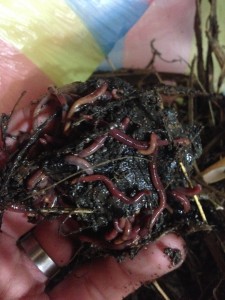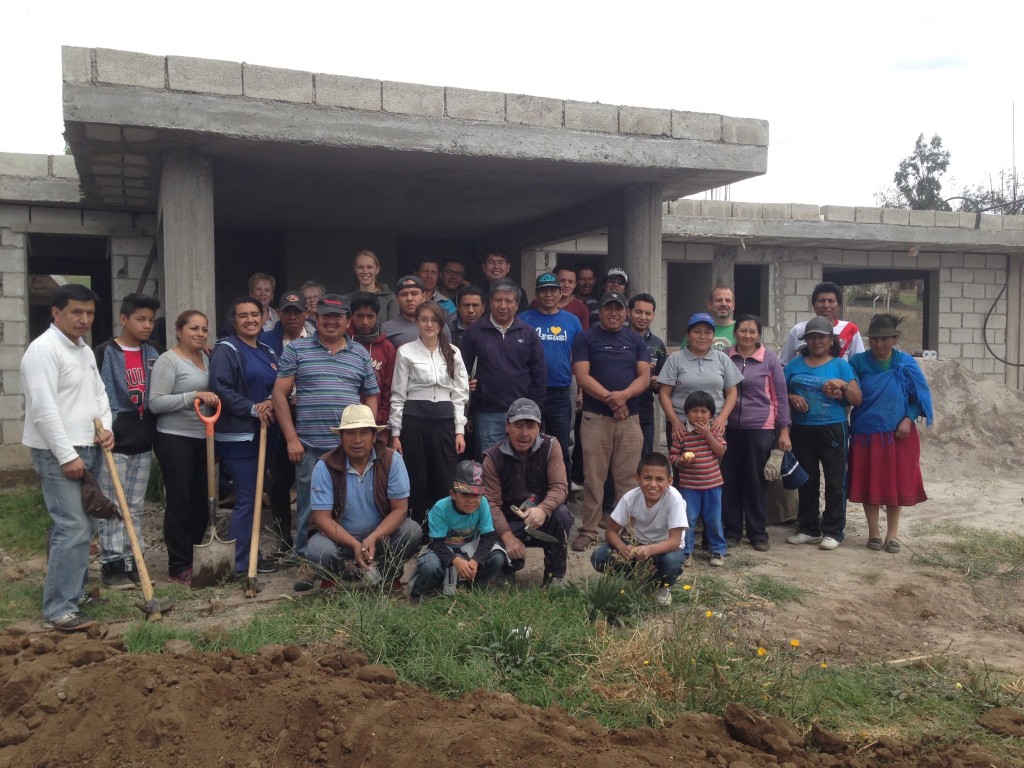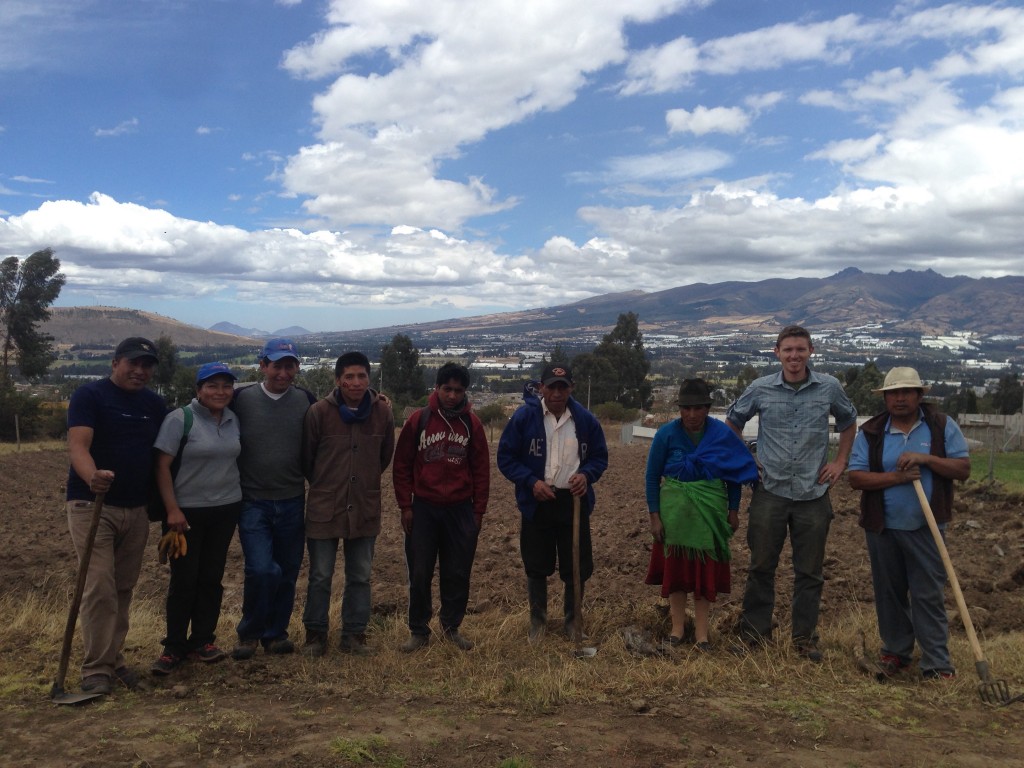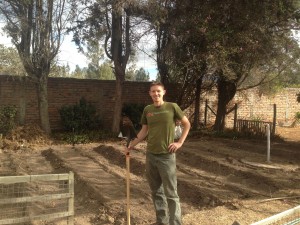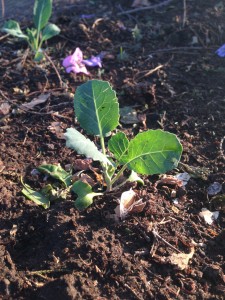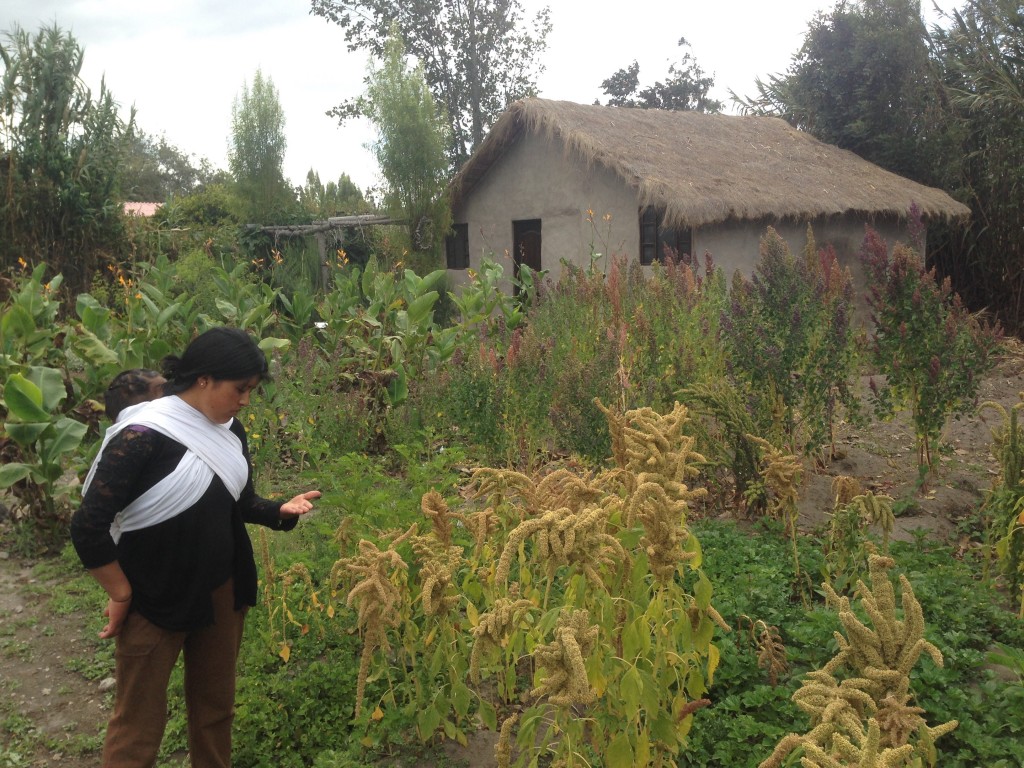Our hope in coming to Ecuador and partnering with FACE (the community development branch of the Ecuadorian Covenant Church) was to be able to participate in as much agriculture-related activities as possible. We are happy to report that in this past first month or so, we have had several opportunities to get our hands dirty and do just that. Here are a few of our experiences so far:
First of all, we would like to introduce you to our long-term missionary colleagues here in Ecuador, Joel and Kim Delp who have been serving for several years. As some of you may know they have established a visionary project in collaboration with the national church, called The Santiago Partnership. They have been working on constructing and establishing a home for at-risk children and a community medical clinic in the city of Cayambe, about an hour and a half outside of Quito. They have purchased land, and the clinic is almost ready to open. The home for children has a couple of acres of farmland that will hopefully someday help make the home more self-sufficient and provide food for the children living there. Last week we were able to work together with the Delps and fellow Ecuadorian Coveanters from different churches in nearby cities to plant 1400lbs of seed potatoes. I also brought a few plants of some other crops to see how well they would perform at that altitude, which is higher than where we live, and even higher than Quito.
It was good to spend time with people from the Ecuadorian Covenant church, especially the other FACE employees who we will be partnering closely with. We are working on developing a plan for the land at The Santiago Partnership to include more perennials and fruit trees.
Being at a very high altitude, but right on the equator creates some very interesting conditions for growing. In one family garden I have seen: citrus, cactus, peach, grapes, orchids, apples, pomegranates, and bananas as well as cold weather crops all flourishing. It has been quite a learning curve to figure out how to grow plants up at 7,000 feet with VERY strong sun, no change in day length, volcanic soil, new crop varieties, and a whole slew of new insects that seem intent on eating half of our garden before its ripe.
In our home we took a section of our yard that was grass and put into practice all of the theory and training we have received for the past few years. I created high raised beds amended with worm compost, mushroom compost and mulched heavily. We also participated in a class that our local community center was offering that taught how to make your own organic fertilizers. Much of the material of the class we had learned before, but it was great practice for learning the terminology in Spanish and hearing how organic practices were explained in another language.
We also took a trip a few hours north of Quito to see the Ethno-botanic gardens of Ecuador. There they showcase crops that are native to Ecuador and they explain the traditional ways of growing these crops and the medicinal uses. Below is a photo of one of the caretakers of the gardens with her baby and also a photo of the several colors of heirloom quinoa which has been a staple for Andean people for thousands of years. With the rise in popularity of quinoa in the US and Europe the prices have gone up. This is good news for quinoa farmers but the demand has also driven the price so high that many people who have relied on quinoa as a food source their whole lives can no longer afford it.
We look forward to jumping into even more agriculture related projects as we continue to learn and experience all that beautiful Ecuador has to offer.

